‘Caption It’ was a two week photographic exhibition from the ‘Muna Kampala, Omanyi Kampala?’ Kampala 365 days photo series by Jim Joel Nyakaana on the verandah of the Uganda National Museum.
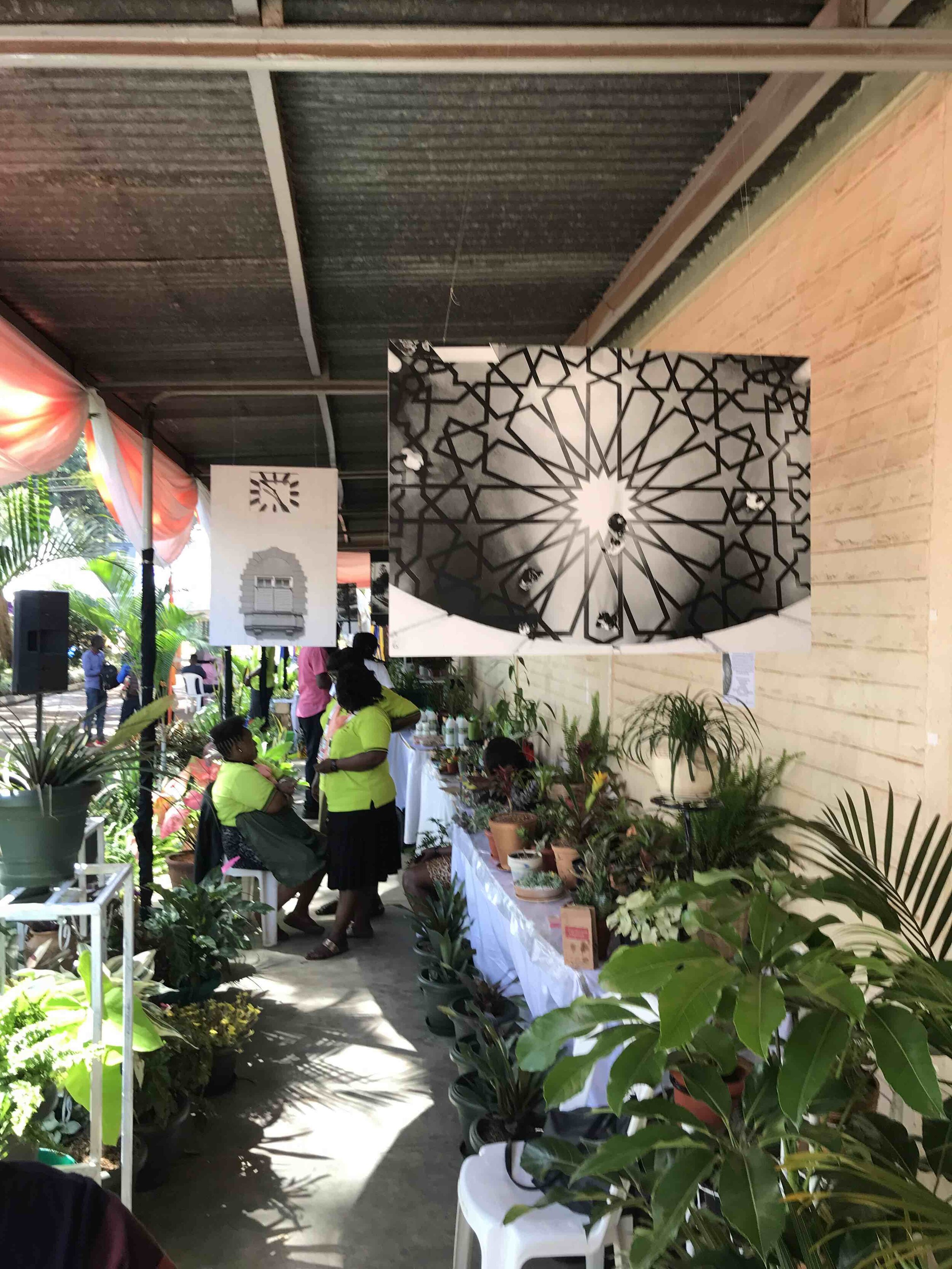
![caption it conversation].jpg](https://images.squarespace-cdn.com/content/v1/5d1221dbcebbb20001882534/1588796911273-80YG6FVXKC7JHOU14VRE/caption+it+conversation%5D.jpg)
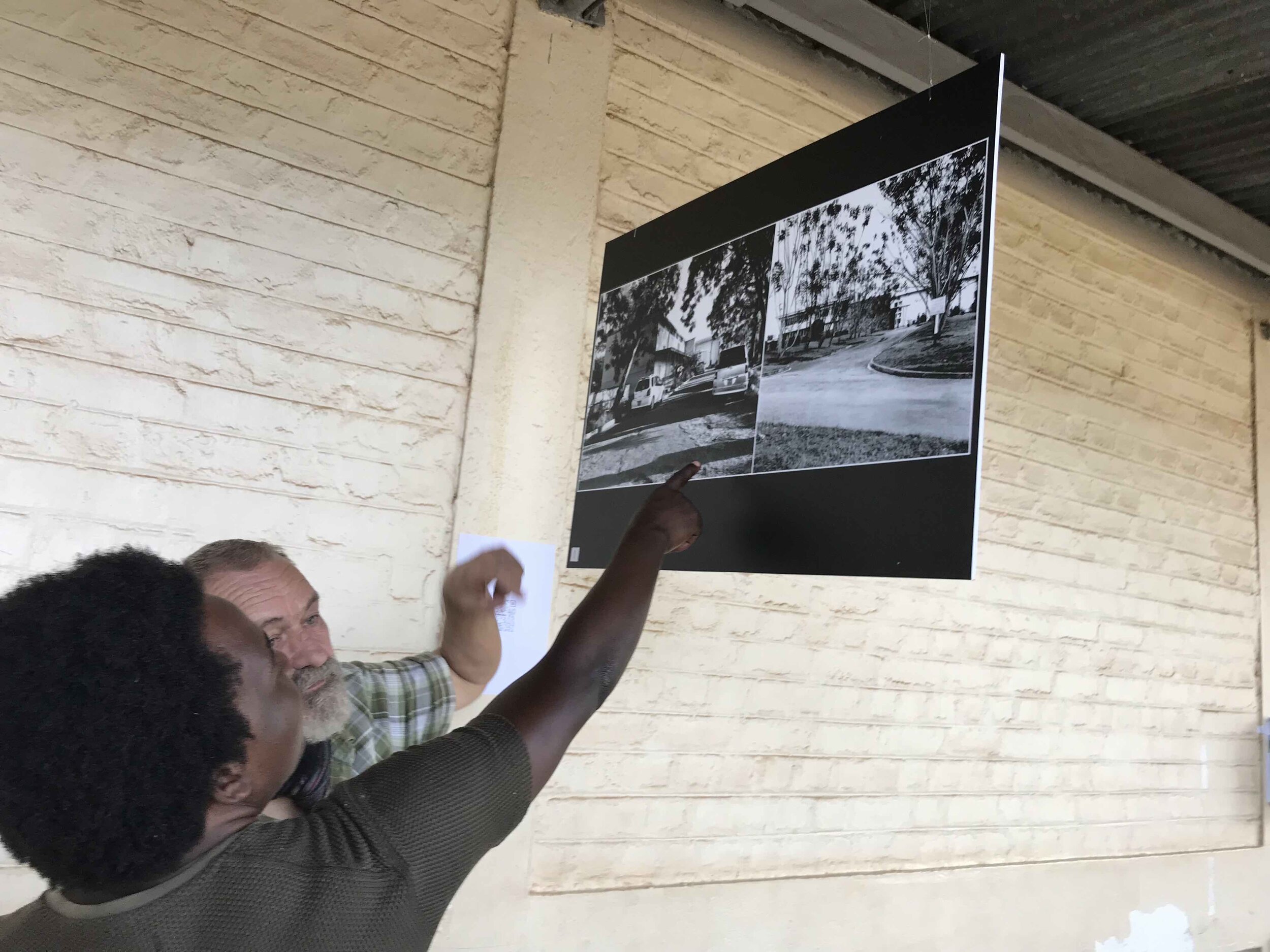
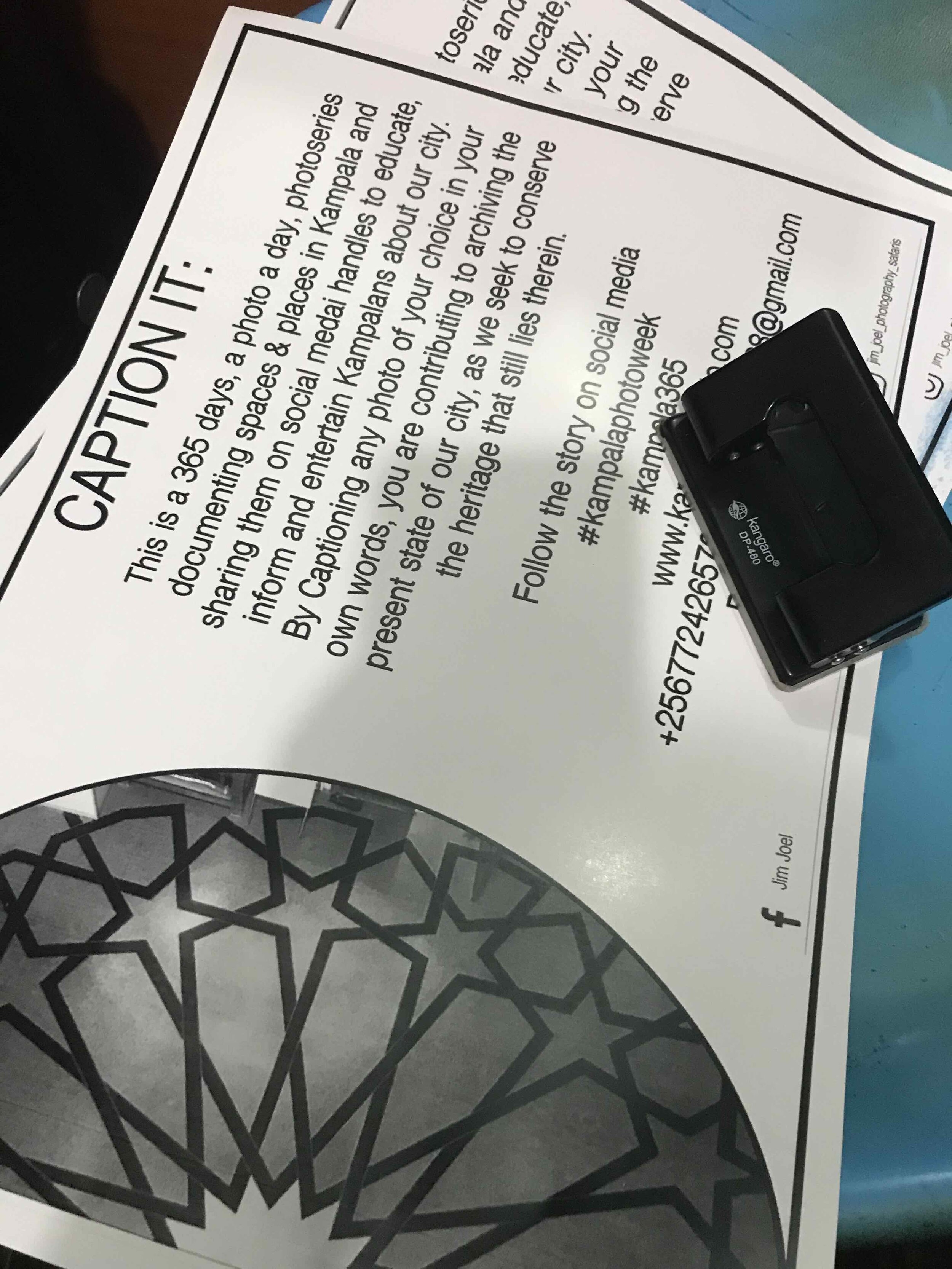
“ I chose to use the outside verandah, where many students line up to get into the museum but also where people pass by. This was in line with my series about the architecture of Kampala that we usually pass by and don’t notice, as a way to engage the public to know their Kampala spaces.
The exhibit was based on a 365 days, photo a day, photo series documenting spaces and places in Kampala and sharing them on social media handles to educate, inform and entertain Kampalans about our city. By captioning any photo of your choice in your own words, you are contributing to archiving the present state in our city as we seek to conserve the heritage that lies therein. Follow the story on social media #kampalaphotoweek #kampala365”
Exhibition reflections
National Museum, Museum Day, 18th May 2019
“This particular photo created a conversation amongst certain colleagues and they had to walk outside the museum perimeter walls to ascertain where exactly the photographer stood when taking this archival photo. I was not around when the conversation took place, but a colleague who works at the Uganda book society told me the whole story. They literally had to walk outside the museum perimeter boundaries and we walked on the streets arguing where this point was, as much has changed over the years. It showed me the power of archives and places.
This prompted me to include this archival photo in my series since I was documenting Kampala. This also informed me how exhibitions can be sources of information, and doing them in series brings in more people with more knowledge you may not have found in libraries or archives.”
…
Later on, one of the exhibition visitors asked me a very intriguing question, “How shall I visually present the now Kampala in context to the old Kampala I have discovered in the archives or on the streets?”. He later sent me a PDF document about how Kampala was planned in the 1940s by Ernest May, a German urban planner (a question asked in May 2019 and I have not yet come up with an answer. That is when I felt photography could be a limiting medium and I have to explore other mediums just to answer that question.”
- Email reflecting on the exhibition, from Jim Joel to Emilie Flower, September 2019
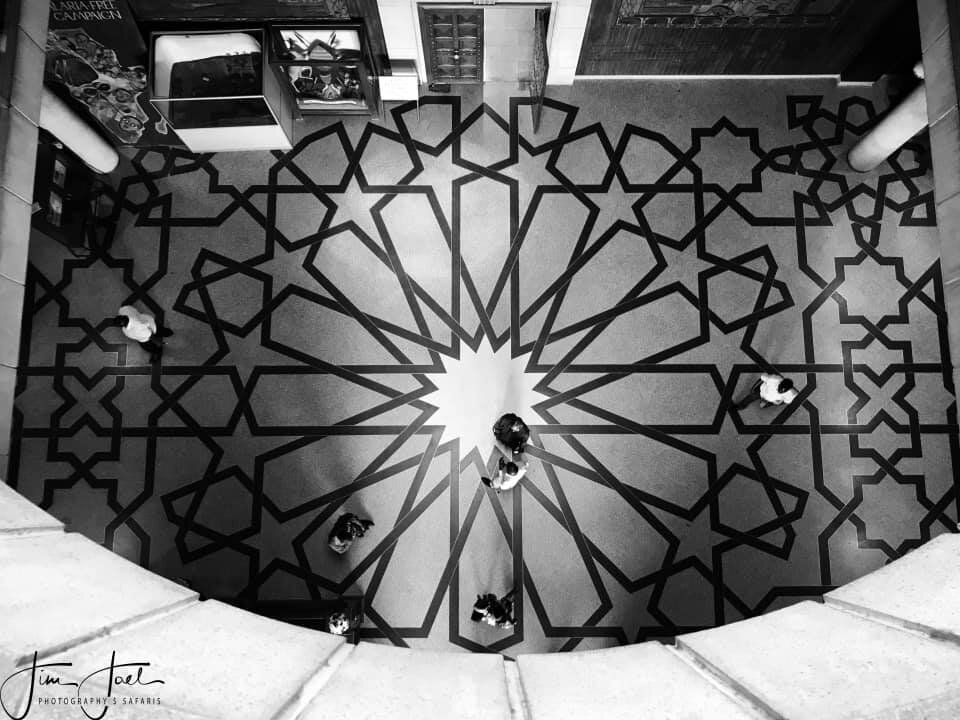
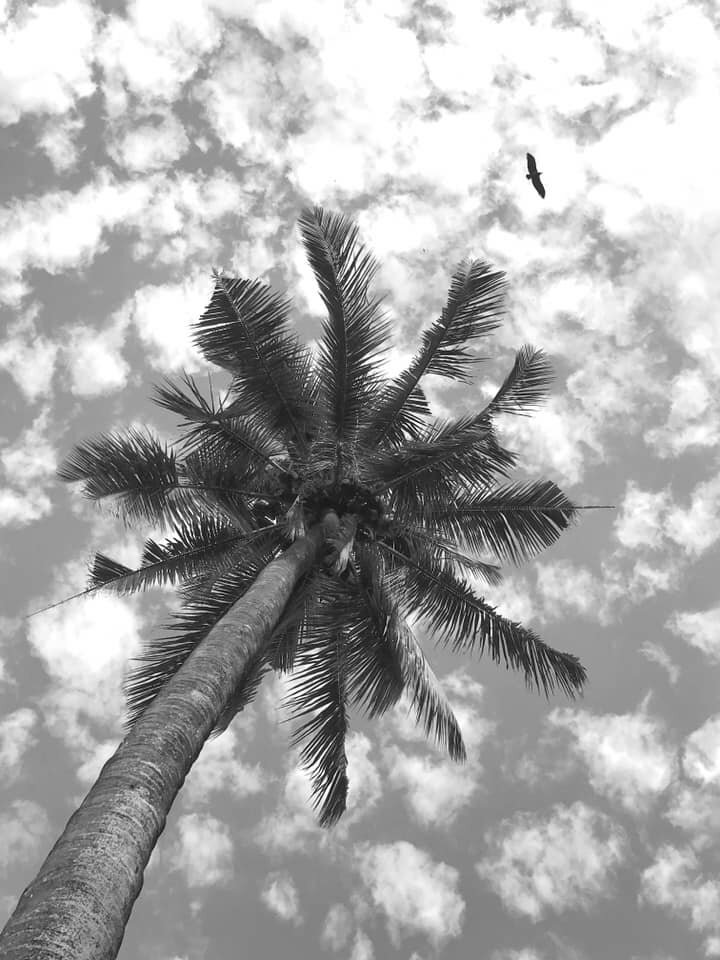
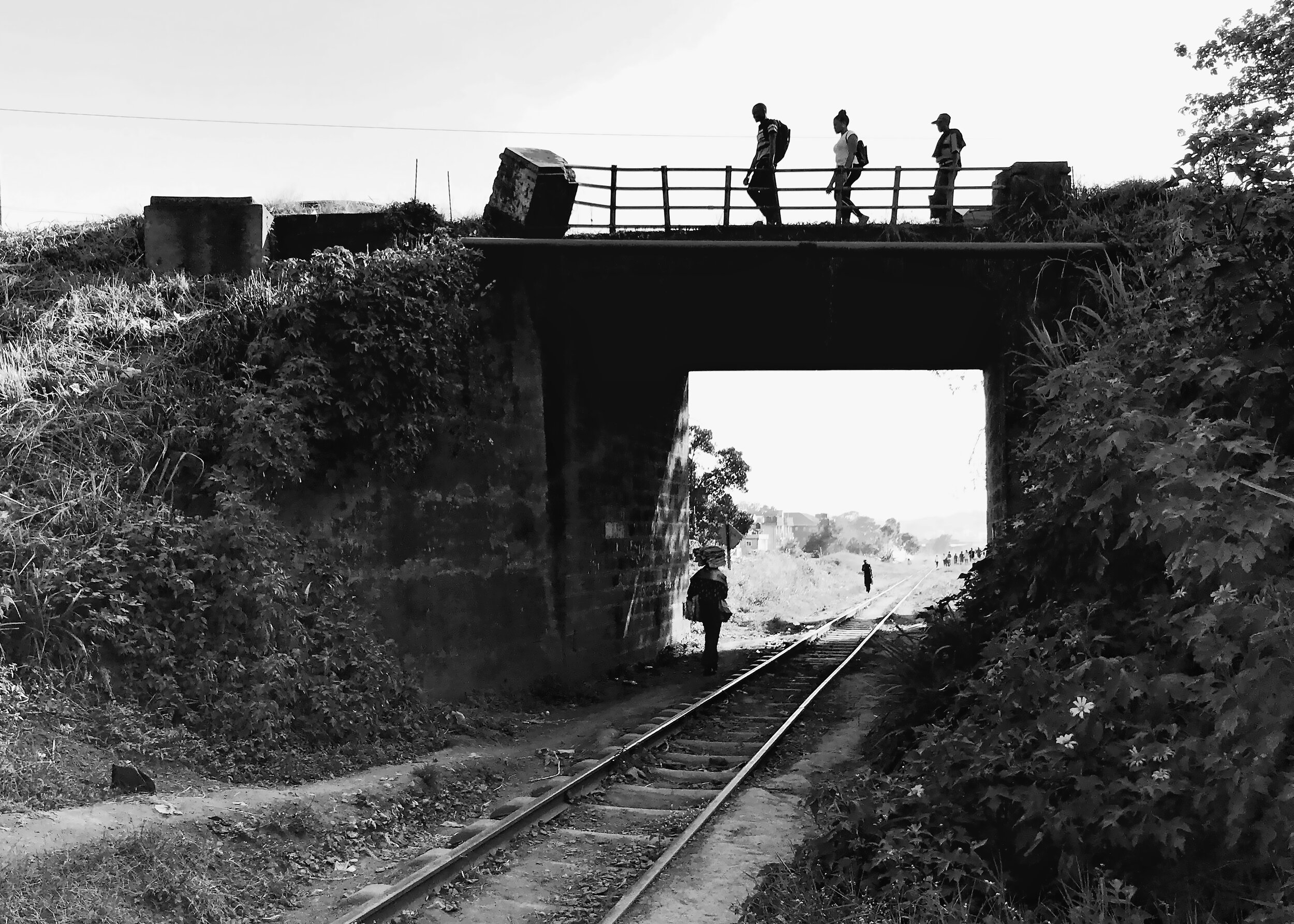
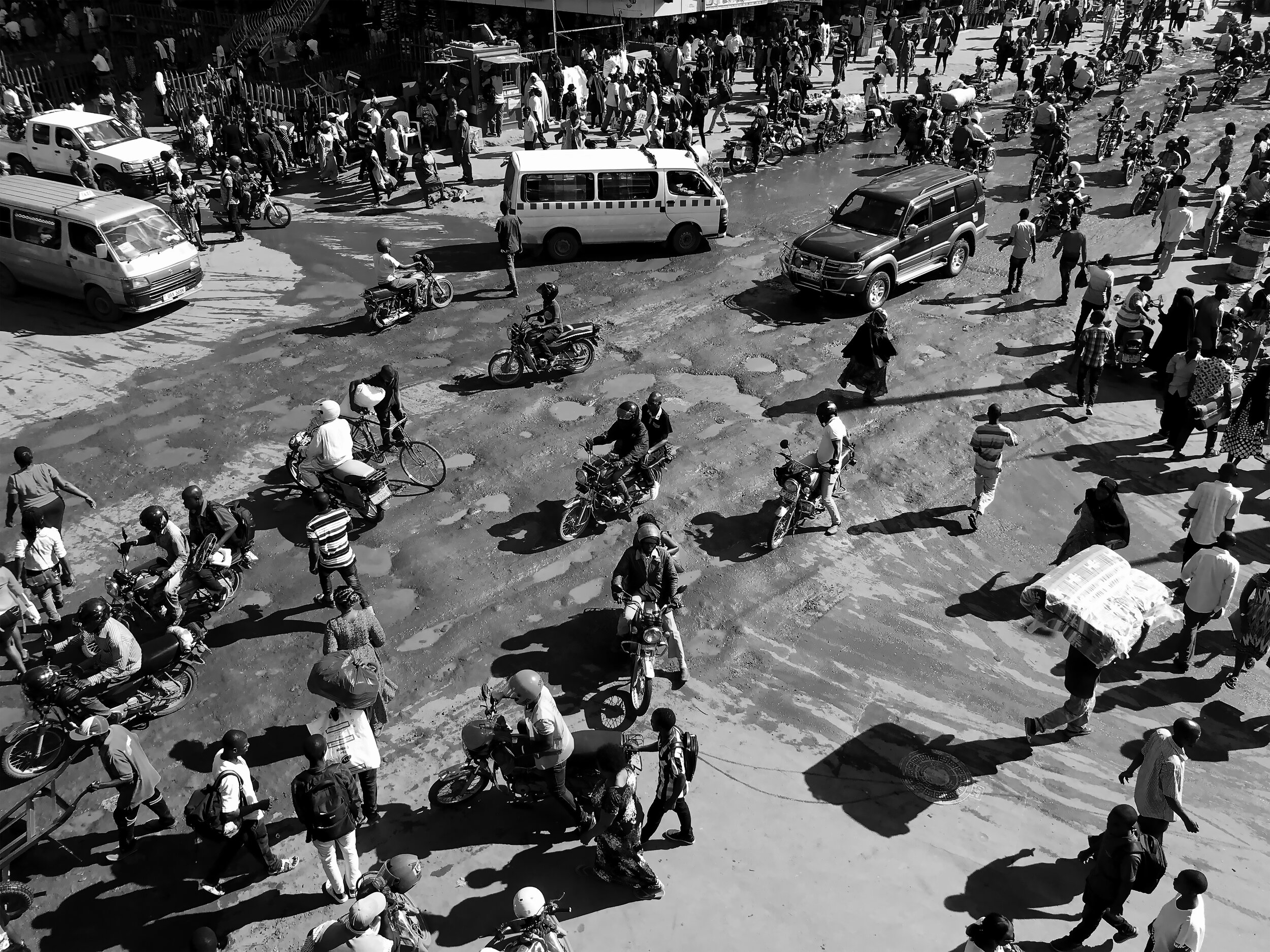
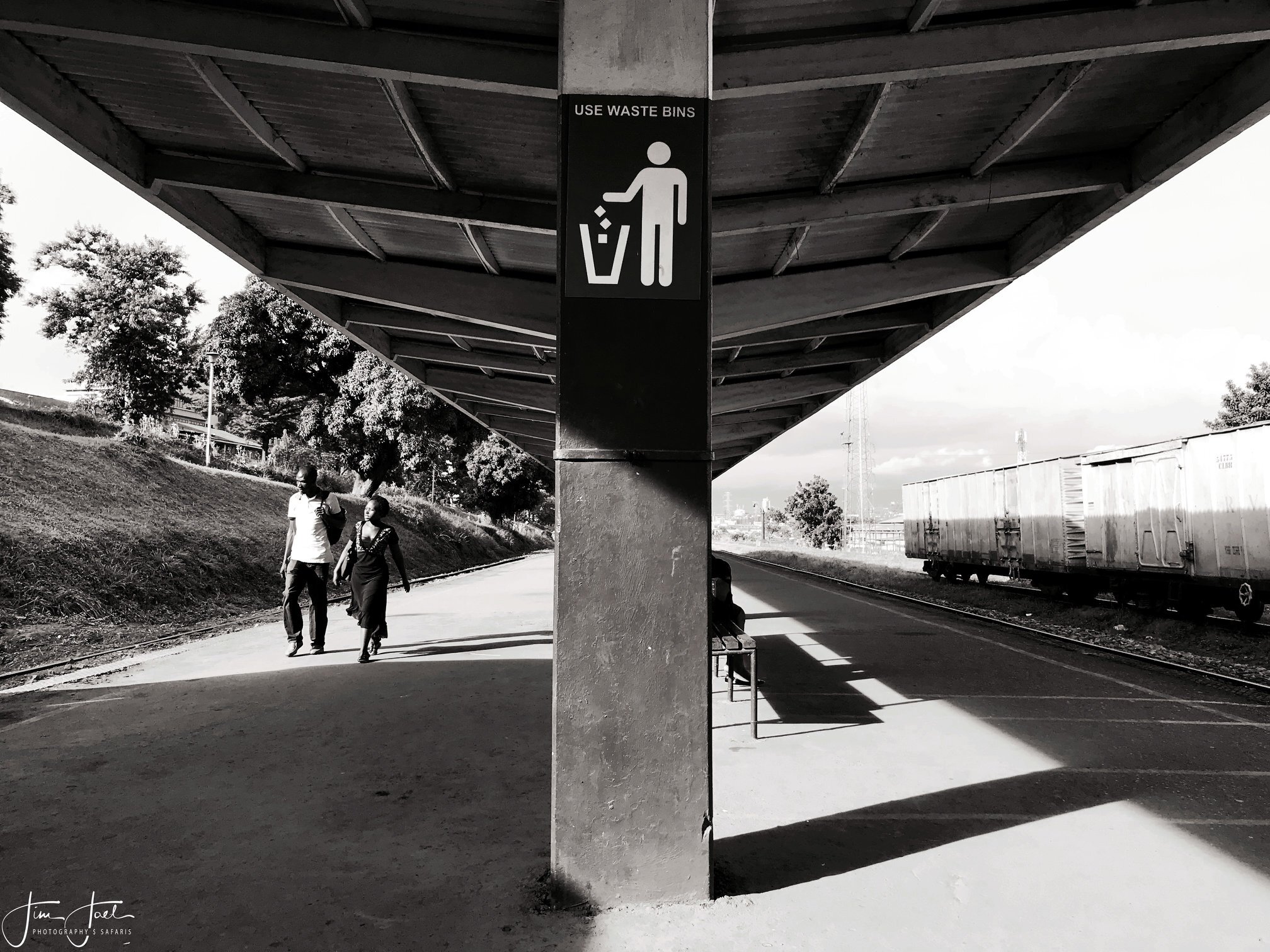
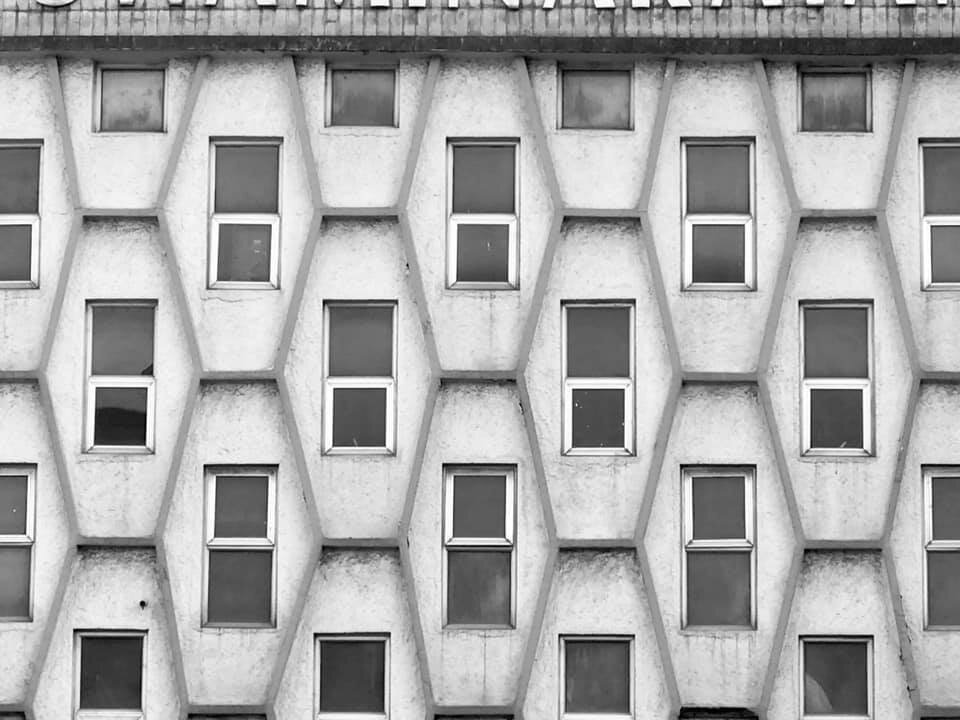
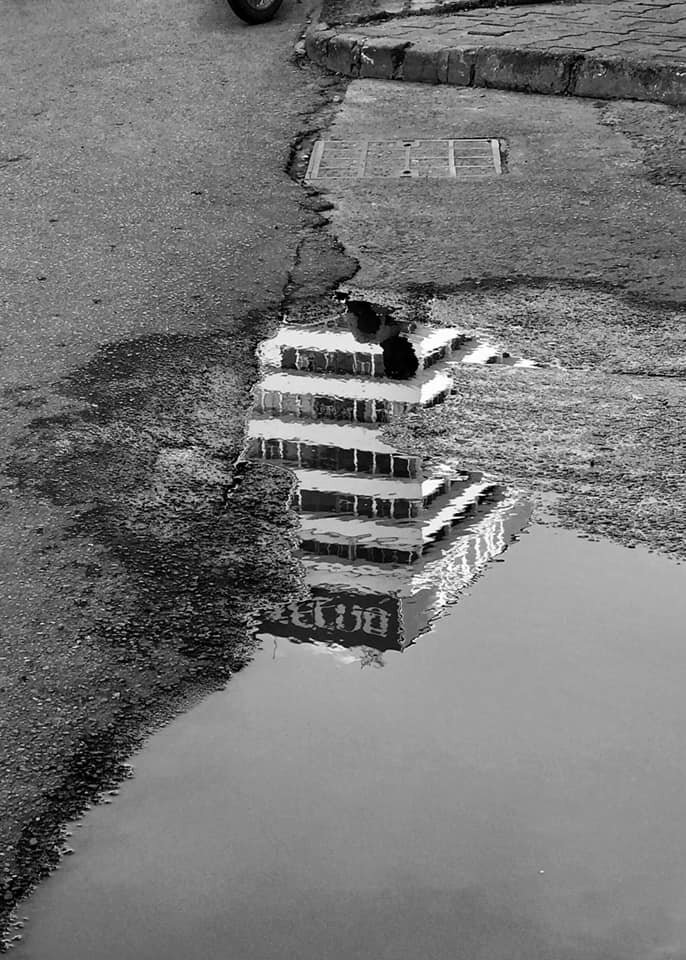
Walkscapes
Interview with Jim Joel Nyakaana by Emilie Flower and Ruth Kelly, York, October 2019
“Naturally I love walking, because it helps me reflect – a lot. It informs your part in the whole story, especially if you’re walking the city. What’s your part in in the story. It’s not like you’re looking at it like God is looking at the world. You’re in the story. So how do you tell the story not from a bird’s eye view; how do you tell the story from an ant’s view, but at the same time take a bit of the aerial view to understand it. Because you’re already part of the story. The walking helps you map out places.
What will I miss if I’m in a hurry?
Walking.
Walking is one way that helps me understand a city and read a city. The more you pass by a place, the more you see something else. I usually choose particular elements: the streets and the architecture, those are the elements I use to read a city. In the streets you’ll find the people walking, you’ll find the flow of traffic. Where are they heading to? If you don’t know, you can just follow, you can get lost and find something interesting. Sometimes I have colour moods, trying, tasting, still with shapes, still with black white, red, red! That’s another colour I can follow in the street, sometimes I just follow someone in a red car or someone in a red jacket, let me see where this person is heading to. Well, you follow at a distance! There’s an element of play in approaching a city – walking with my son, what he does is just play – so I always also leave a part to play, to get lost, to view it through a child’s eyes.
I started shooting in black and white to grab people’s attention, just to be cheeky, because everyone is always posting in colour. Then later on I realised that I have a film camera I haven’t used; along the way I’ll see how to incorporate it. Artistically, black and white sucks out all the other colour, and you pay attention to particular detail. I look out for shapes, shadows, textures as well. I always explore geometry, the shapes in places, to me shapes attract me my visuals, strongly, not only circles or squares but any shape, as long as it’s a shape. I feel like this is like a foundational stage, sometimes I go back and try sketching shapes to see what other shapes I come up with. What detail are you seeing in a place that you need to communicate? Have you communicated it well for other people to understand?
It creates conversation. Why black and white? Show us some colour! But no, see it that way, what do you see?
I needed an entry point to understanding a place. This is a one-year project documenting Kampala and the other cities I’ve been to. I have been thinking about the other elements I need to look into: how to read the city without the elements that are already there in my photographs. Should I taste the place, taste the food, would that help me understand the people? How can I use this layer to uncover another layer? What artistic practice can that fuse into that I can use to read a city? And for all of these elements, what channels can I use to express this, to tell story in a different medium? I limit myself when I introduce myself as a photographer – I want to introduce myself as a storyteller. Some of my captions are poetic; it’s boring telling you the whole story, I want everyone to come up with their own versions of what they see, what do you see when you come here, not what do they call it, but what do you call it.
I’m always seen as a photographer, but the bridge is part of my story and the story will not be complete if I do not have it in my images. So I have to find a way of taking that image without whether being arrested and without deleting that file, so I think that’s when the researcher bit comes in because there is a story that you have to build – if I do not have that story I will not have told the whole story, I leave it hanging, I need that image to anchor the story. I think that’s when the researcher comes in. And the photographer, where the photography comes in, it’s in terms of where I position myself, what time I photograph, if I need shadows and all that: that’s when I put forward the artistic foot. In my country I only shoot when the light it is at a certain angle, not at midday when the sun’s really high. And if I, let’s say I need blue skies, because I’m not going to play about with black and white, or white skies, that’s when the artistic side comes in, and the researcher side takes a seat. You have to know what artistic element you are trying to tell in your photos. And then, the other part, probably what I would call the third leg is the child part of you: play. When there is no sun, when there’s no what, just play. See what comes out, don’t wait or say because there’s no sun I won’t shoot, because it’s dark I won’t shoot. When you play you get at certain other elements, you find your other voice, your artistic voice that you did not know about.”
residencies
Throughout the project, core members of the team kept in regular contact exchanging ideas , looking for connections and developing collaborative work. The exerts below describe some of this exchange in Jim’s words.
In October 2019 Jim Joel came to York for a residency in the York Railway Archive, to visit other archives with the project team and took part in an archive symposium. Shohrab Jahan, Jim Joel and Emilie Flower began thinking about how to collaborate and made a small collaborative installation together, Archive Alive. During this time, Jim also ran a workshop with Ruth Kelly on Walkscapes.
In January and February 2020 Jim spent a month in Egypt at Darb 1718 on a residency with Ugandan Arts Trust 32 degrees. On Sat, 6th Feb. 2020, Jim Joel wrote from Egypt:
Walking In Egypt has been different from that of York. The language barrier, it gave a whole different approach to my walking. Some places I had to follow a direct route so as not to get lost...where the route was the river Nile, and the instances I used the map, sometimes it was not clear on the elements used in the map.
Other times I had to follow the wind, (this was in Alexandria to locate the sea).
I intentionally refused to use google on my phone as part of the experience and only picked up a map later on so as to cover so many places in the short time available.
I have realised each city presents its own challenges which are part of the story, the major challenge has been language here, which sparked another experience altogether.
The triangle is still floating through my mind and the pyramids kind of tie it down further as an architectural subject.
March 2020 Emilie Flower, Shohrab Jahan and Jim Joel produced an exhibition together at the Uganda National Museum, Kampala.
April 2020, the project comes to an end just as all of the project countries lockdown due to the Coronavirus outbreak. On Sat, 11 Apr 2020, Jim Joel wrote:
…Playing more with triangles, this time experimenting with Arabic traditional arts I saw on many of the buildings in Egypt. My mind has slowed down and is finally connecting the two experiences. I had not got the time to relax and review both experiences. … The top is a photo of an Islamic geometric pattern found on our parliament floor. Below it is my drawing of one of the Islamic geometric pattern in the same family. Hopefully I get to draw out a whole set and exhibit at the parliament and stir up an art conversation away from the usual politics.
The floor of the Ugandan parliament




